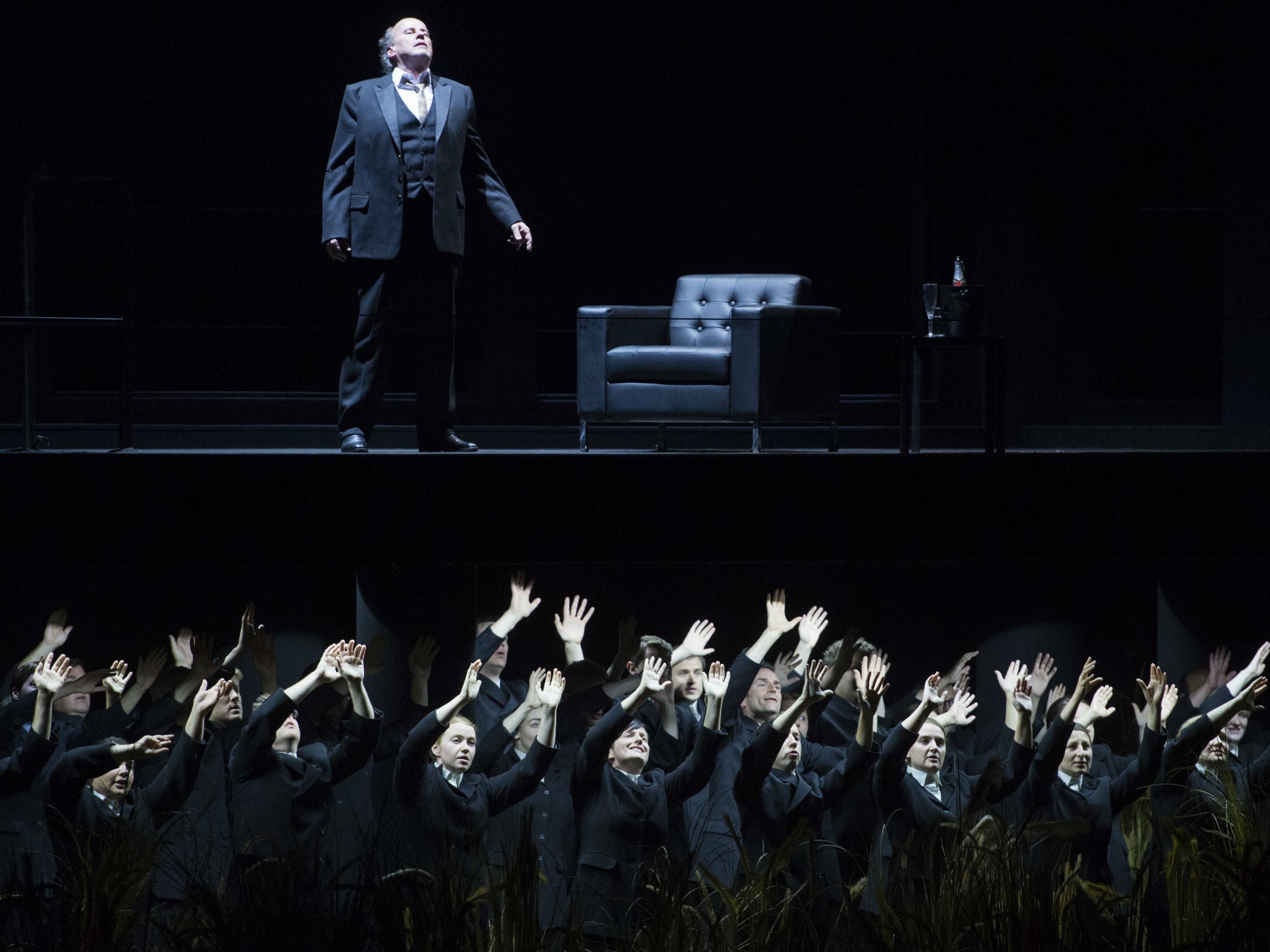La clemenza di Tito, Glyndebourne Festival Opera, review: Tito and Sesto's relationship was totally implausible
Claus Guth’s new production of Mozart’s 'La clemenza di Tito' didn't start off on a good footing thanks to a video malfunction, but it was saved by the music

It was rotten luck on Claus Guth’s new production of Mozart’s La clemenza di Tito that the video round which it was built should malfunction calamitously on opening night. What we should have seen was two boys playing competitively with a catapult: this was Guth’s invented back-story to the friendship of Tito and Sesto, on whose threatened violent destruction the plot of this opera turns. The result was to leave everyone twitchy, a problem compounded by further factors: Richard Croft’s Tito looked like the grandfather of Anna Stephany’s Sesto, thus making their relationship totally implausible; Tito’s minicab “palace”, some scrubby grassland beneath it, and a perpetually-moving giant screen, all conspired to set up a pointless and unresolved visual cacophony.
The evening was triumphantly saved thanks in part to Mozart’s eloquent score (which needs no cinematic help), and in part to a team effort led with great refinement by Robin Ticciati in the pit. Alice Coote had difficulty finding her character as the turbulent Vitellia, but delivered a bravura display in her vocally demanding part; Michele Losier brought a lovely fullness of tone to Sesto’s friend Annio. Croft’s sound was small but sweet, and he movingly articulated his searing inner struggle; cross-dressed Stephany’s ravishingly-sung and vividly-characterised Sesto deservedly stole the show. The Glyndebourne Chorus plus the Orchestra of the Age of Enlightenment – with its brilliant clarinet solos, and its melting harpsichord and cello continuo – wrapped everything in a glow of beauty.
Join our commenting forum
Join thought-provoking conversations, follow other Independent readers and see their replies
Comments